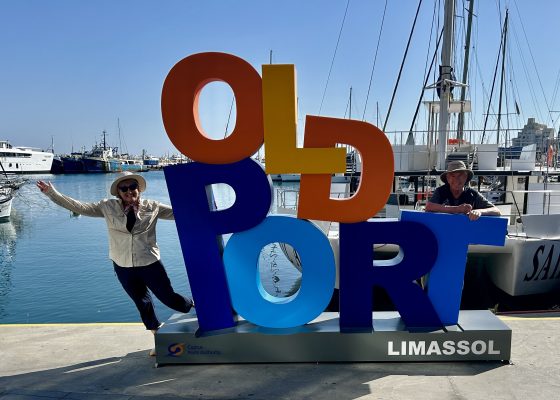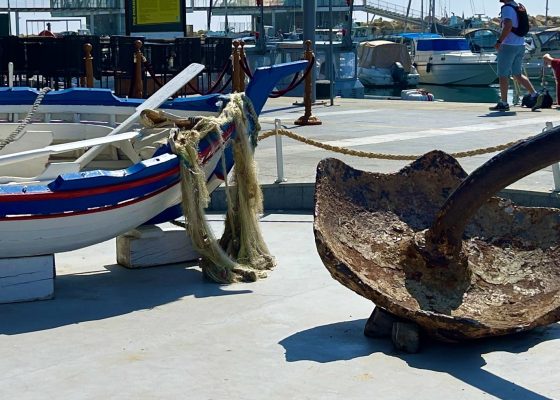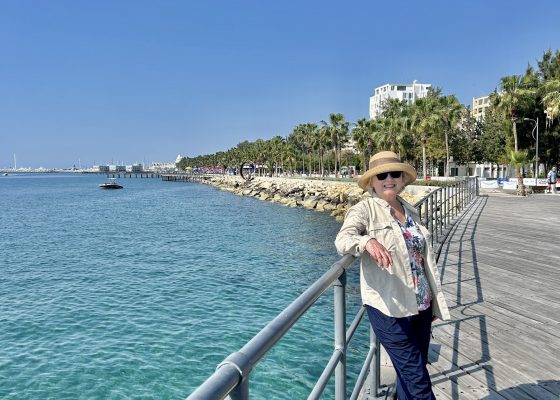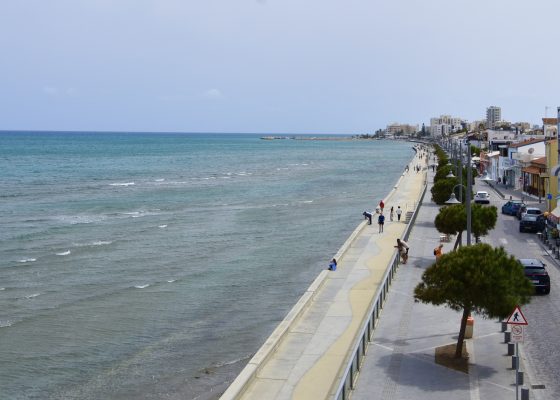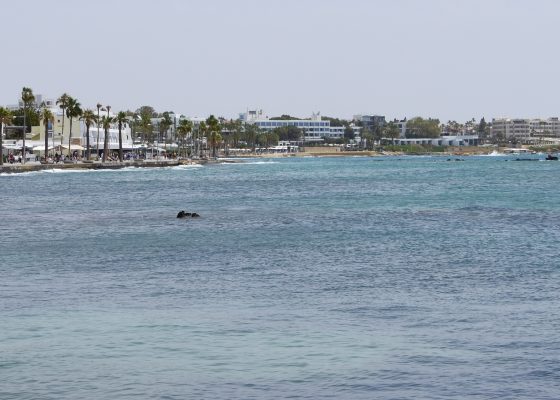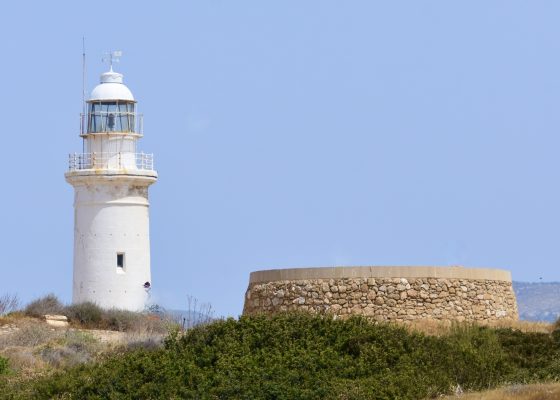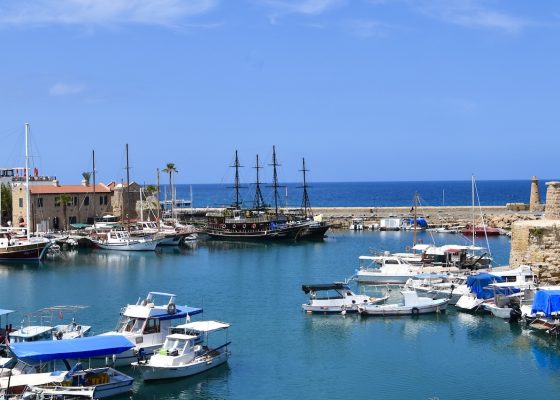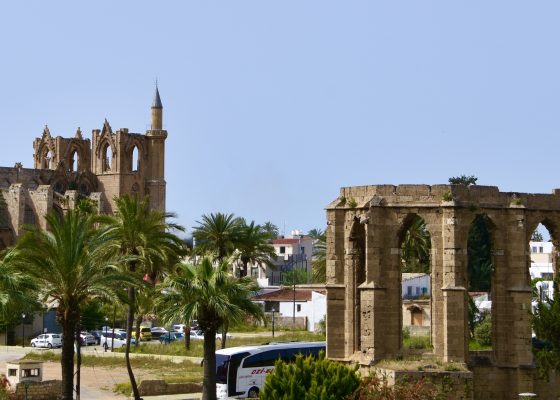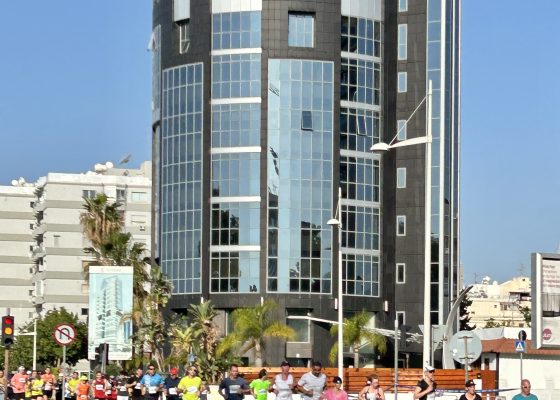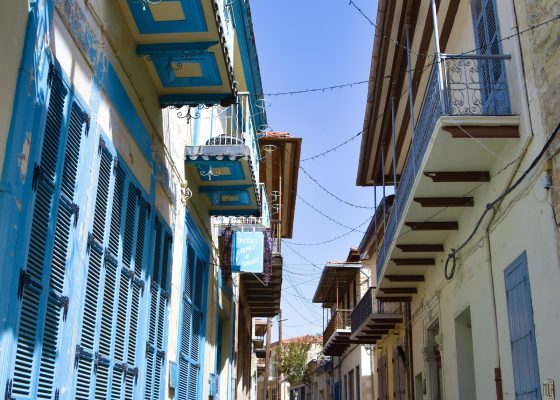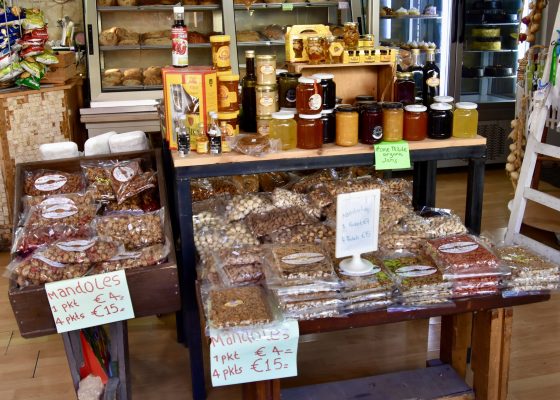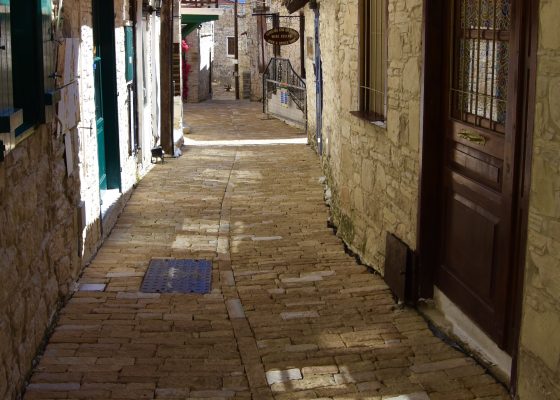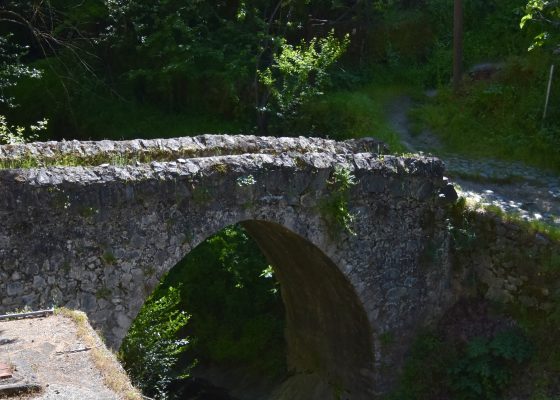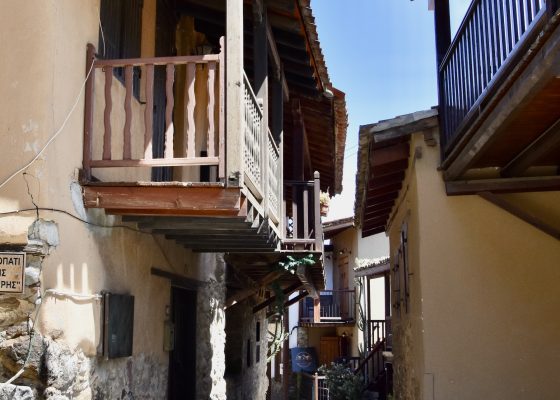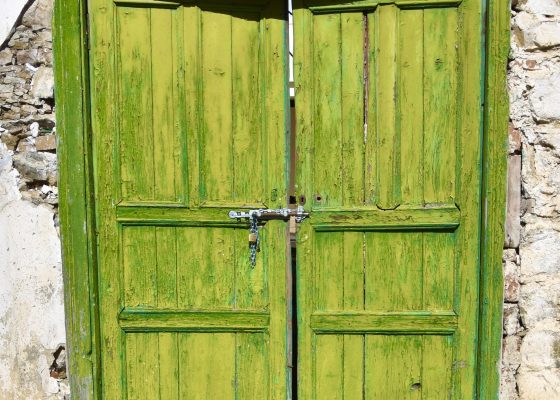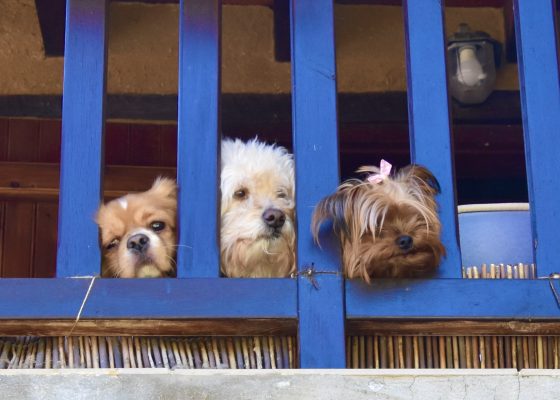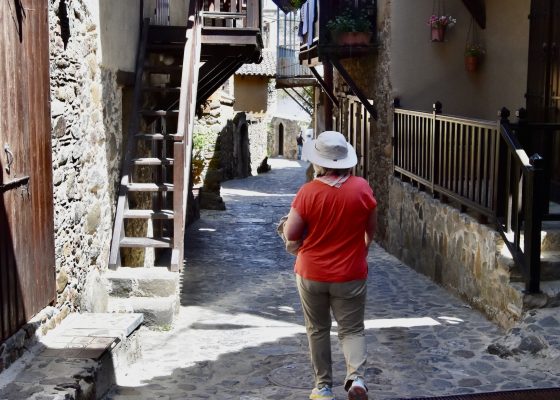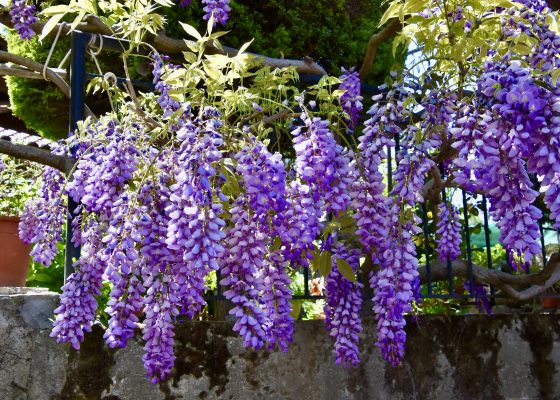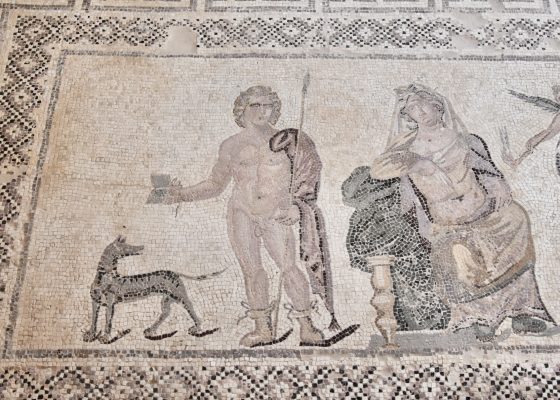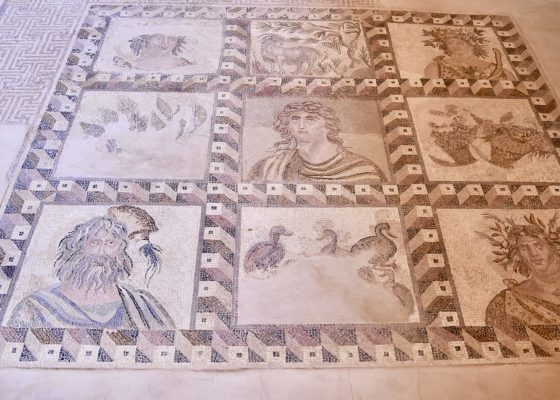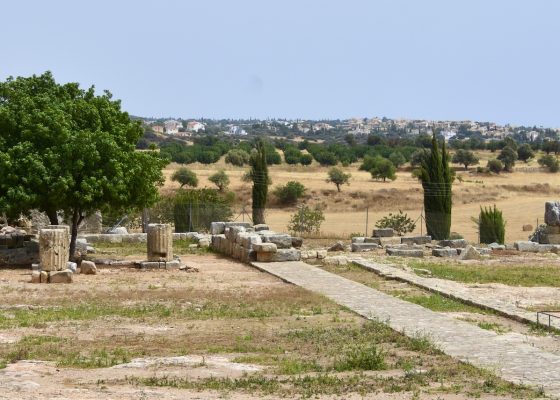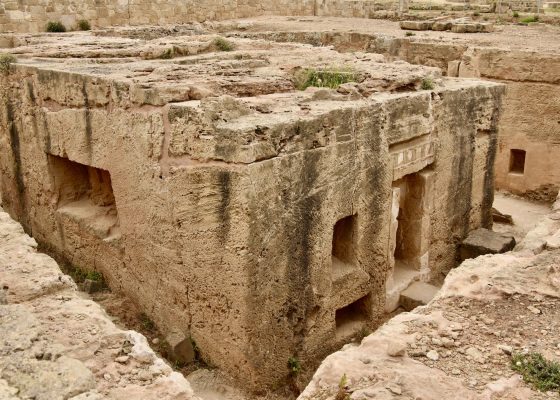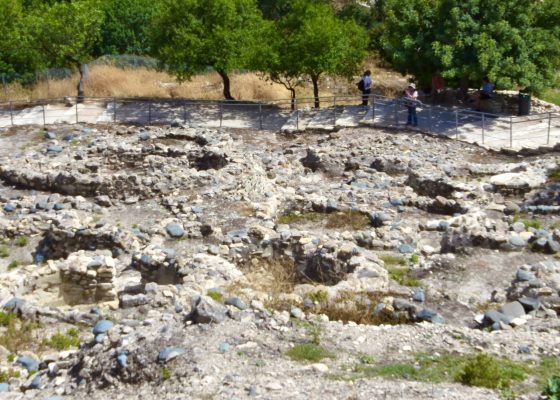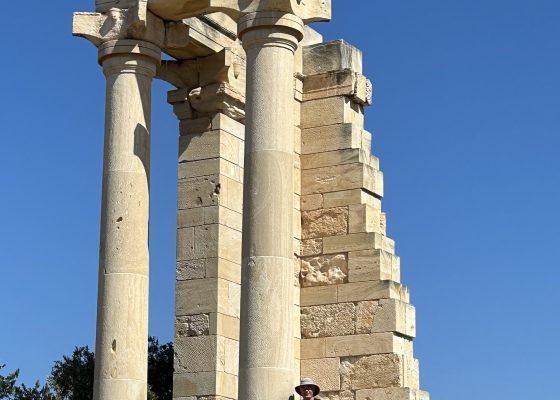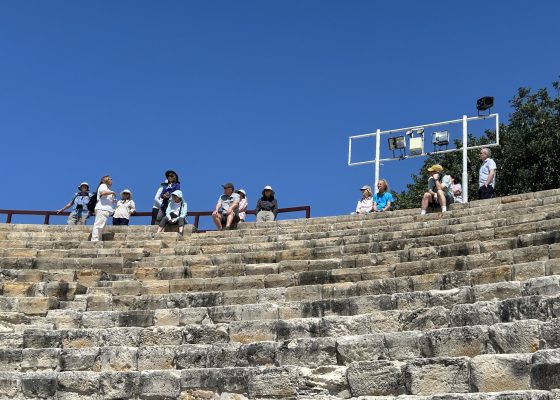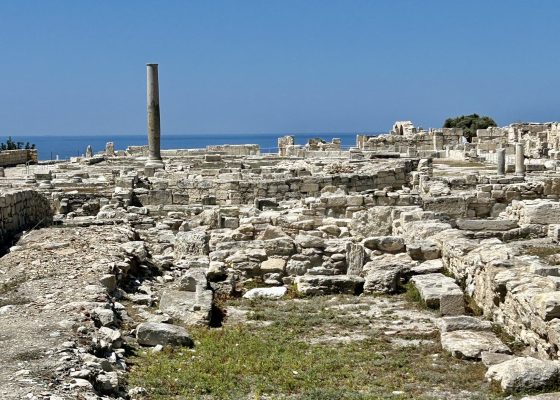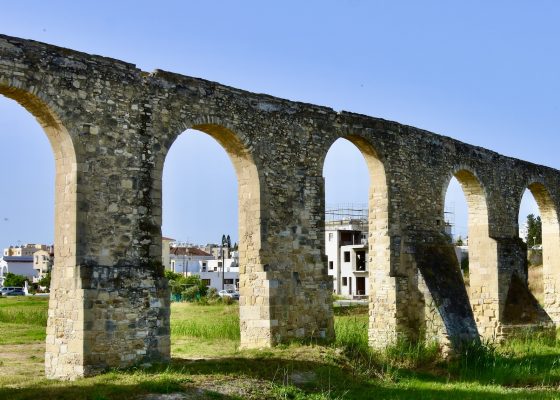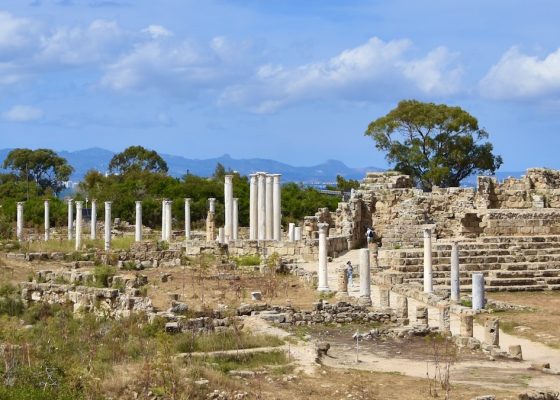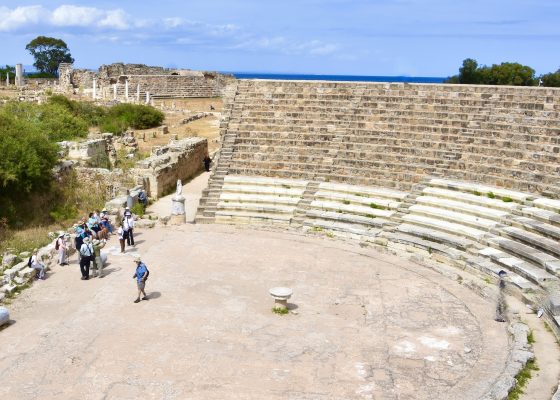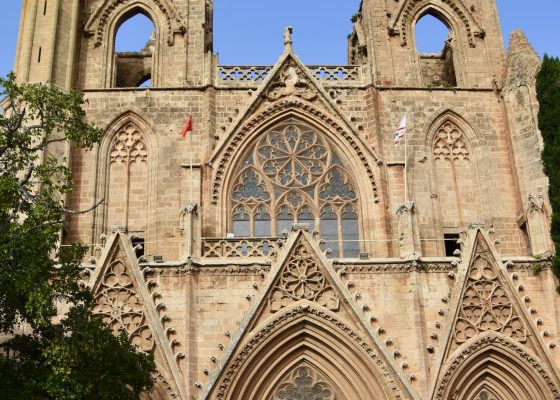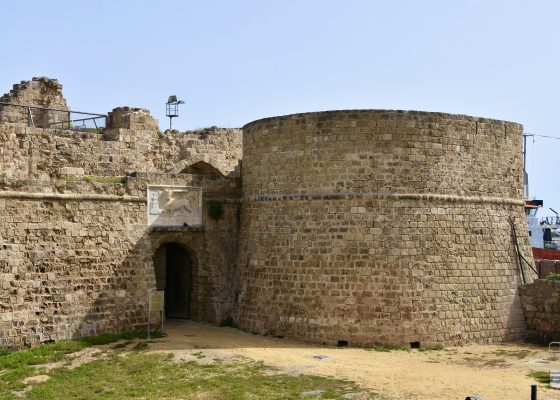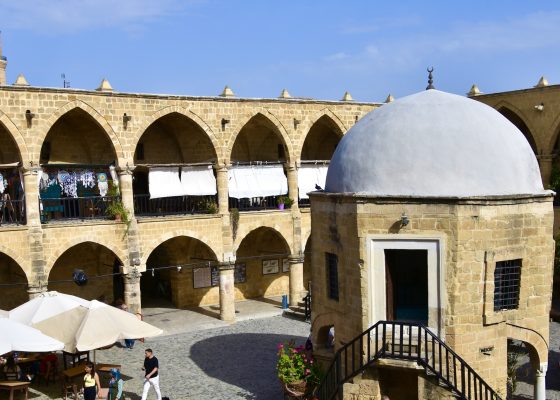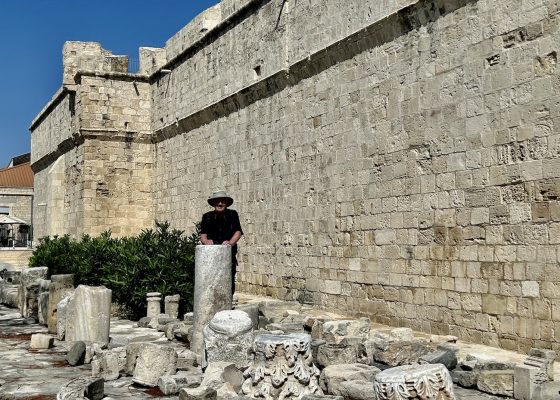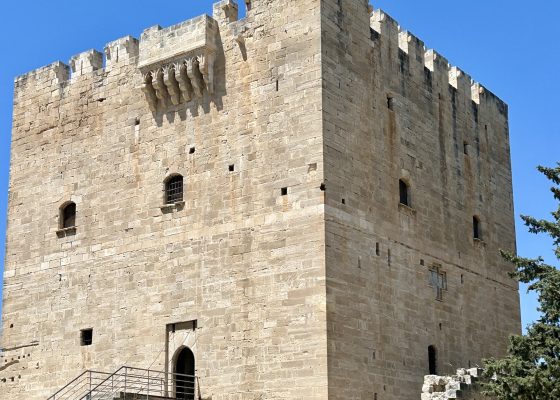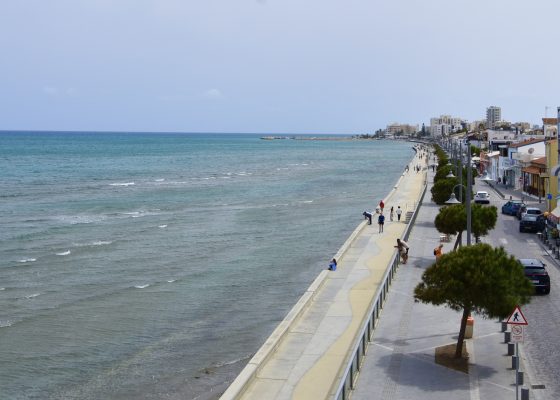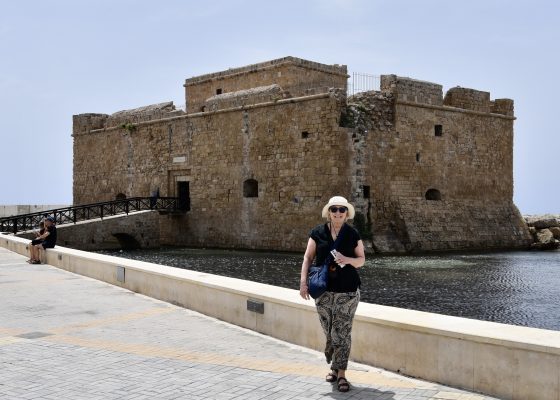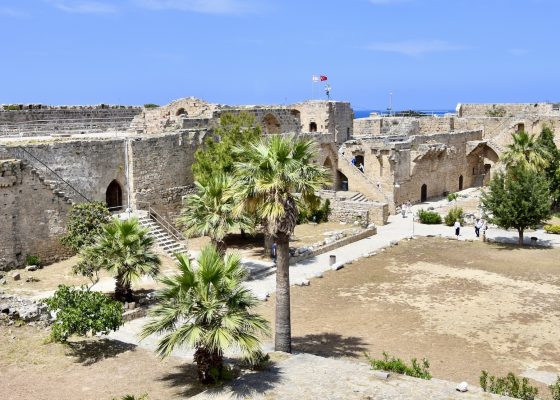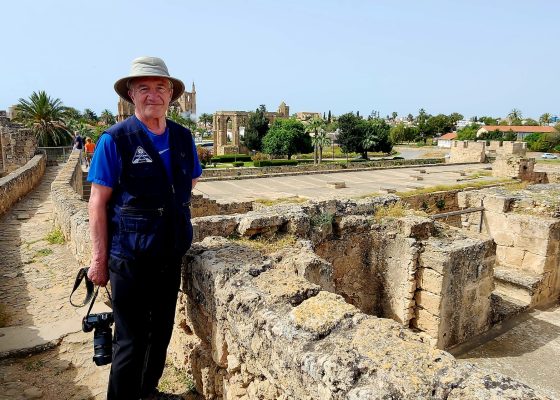Cyprus with Adventures Abroad
Cyprus is not a destination that is on the radar of most North American tourists, yet it’s wildly popular with Europeans, especially Brits and Germans. While they are primarily attracted by the beaches, great weather and the fantastic Cypriot cuisine there is much more to do in Cyprus than just laze in the sun on the beach with a drink in your hand, as tempting as that is to many folks. It has a human history that goes back over 10,000 years and the island has played a pivotal role in every stage of Mediterranean culture from the Neolithic era through Mycenaean and Minoan, Phoenician, Egyptian, Greek, Roman, Byzantine, French, Venetian, Ottoman and British colonial. Every one of these periods has left tangible reminders in the form of ancient cities, castles, monasteries, churches and mosques, many in formidable but beautiful locations and all worth visiting. Aside from actual history, Cyprus is celebrated in myth as the birthplace of Aphrodite and Adonis as well as the home of the sculptor Pygmalion, the inspiration for My Fair Lady. It is also an island of great natural beauty both along its coastline and in the interior, particularly the Troodos Mountains. Lastly it has great combination of coastal cities like Limassol, Larnaca, Paphos and Kyrenia and smaller villages in the hills and mountains where the pace of life is almost unchanged for hundreds of years. The cities and villages are perfect places to discover on foot and make for an active vacation that combines sight seeing with some moderate exercise.
It was all these factors that convinced Adventures Abroad trip planner and guide Martin Charlton to draw up an itinerary for a Cyprus tour, but there was a glitch. Originally the tour was to include Lebanon as well Cyprus with this itinerary. Alison and I were signed up, as were sixteen others and then the events of October 7, 2023 happened in the Middle East and Lebanon was no longer feasible. Rather than ditch the whole trip Martin decided to expand the Cyprus portion to almost two full weeks and every single person who had signed up for the original trip switched to the new itinerary. The result was the most comprehensive tour of Cyprus offered by any tour company anywhere. Although Adventures Abroad is not currently showing the itinerary we followed on the website, Martin assures me that they would like to repeat it in the future. It would be a natural for our friend Victor Romagnoli to lead.
What follows are just some of the many reasons why visiting Cyprus with Adventures Abroad should be on your bucket list and even if AA doesn’t repeat it, doing a self-drive following the itinerary would be more than worth it.
Angela Eleftheriou and Kostas Evdokimou
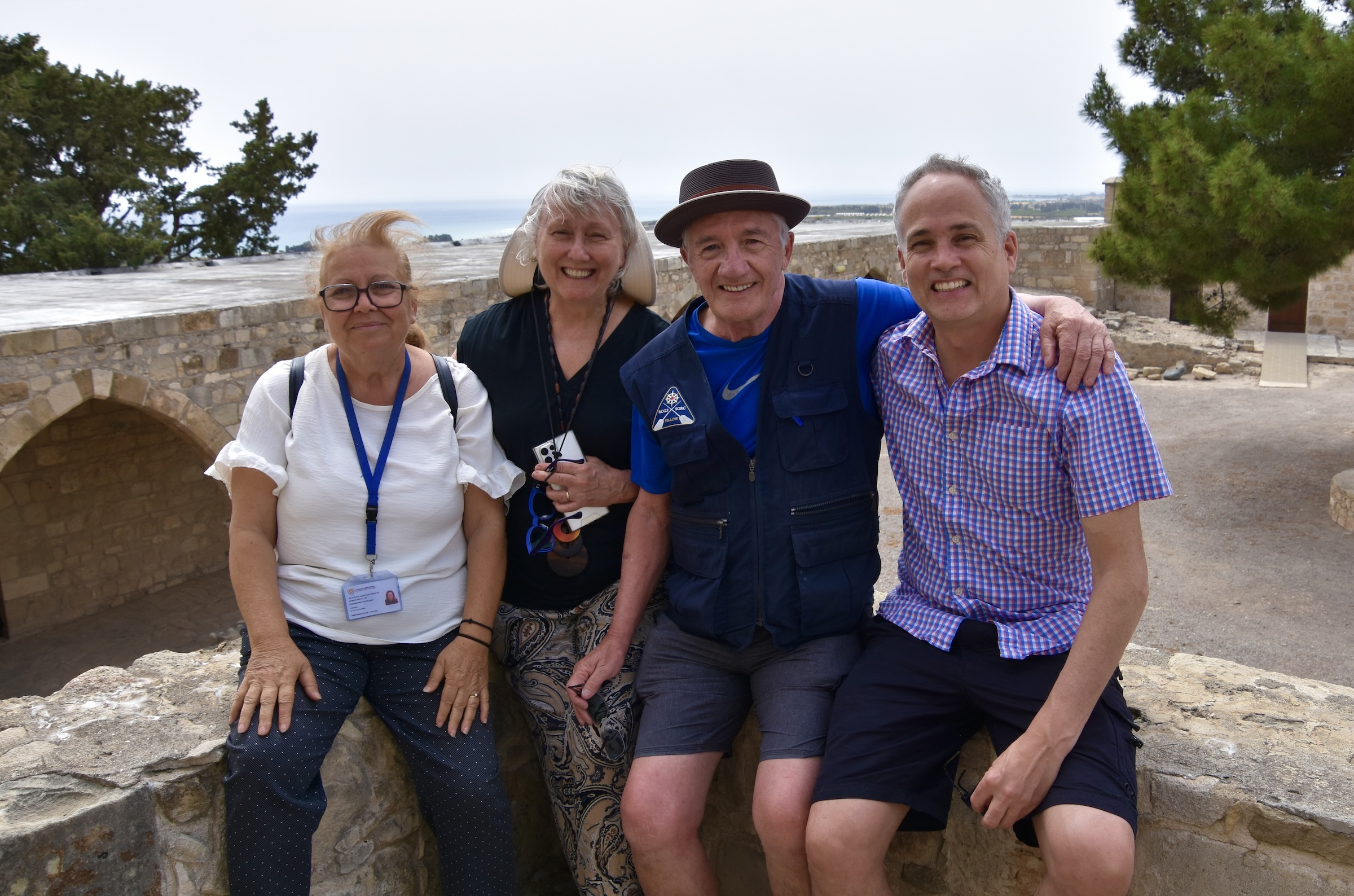
Adventures Abroad always uses local guides along with the tour leader to enhance the overall experience and in prepping for this trip Martin had discussions with a number of Cypriot guides. He settled on long time guide Angela Eleftheriou because of her extensive knowledge, excellent English and modest and charming personality. When the trip had to be expanded in scope after the removal of Lebanon she was instrumental in making suggestions that resulted in us actually going to places that even she had never visited. When I said this trip was comprehensive I meant it. Without Angela we would never have gotten to many places in Cyprus that few tourists ever get to see.
Equally important was our driver Kostas who took our tour bus up some roads that I wouldn’t have tackled in an SUV. His driving skills were off the charts. Rather than cram us all into a small bus, Martin hired a full size coach where we all had a window seat and plenty of room. Without Kostas this would not have been possible. During some of our breaks I saw Kostas telling other drivers places where he had been, such as Kantara castle and the end of the Karpaz peninsula and saw that they were plainly in disbelief.
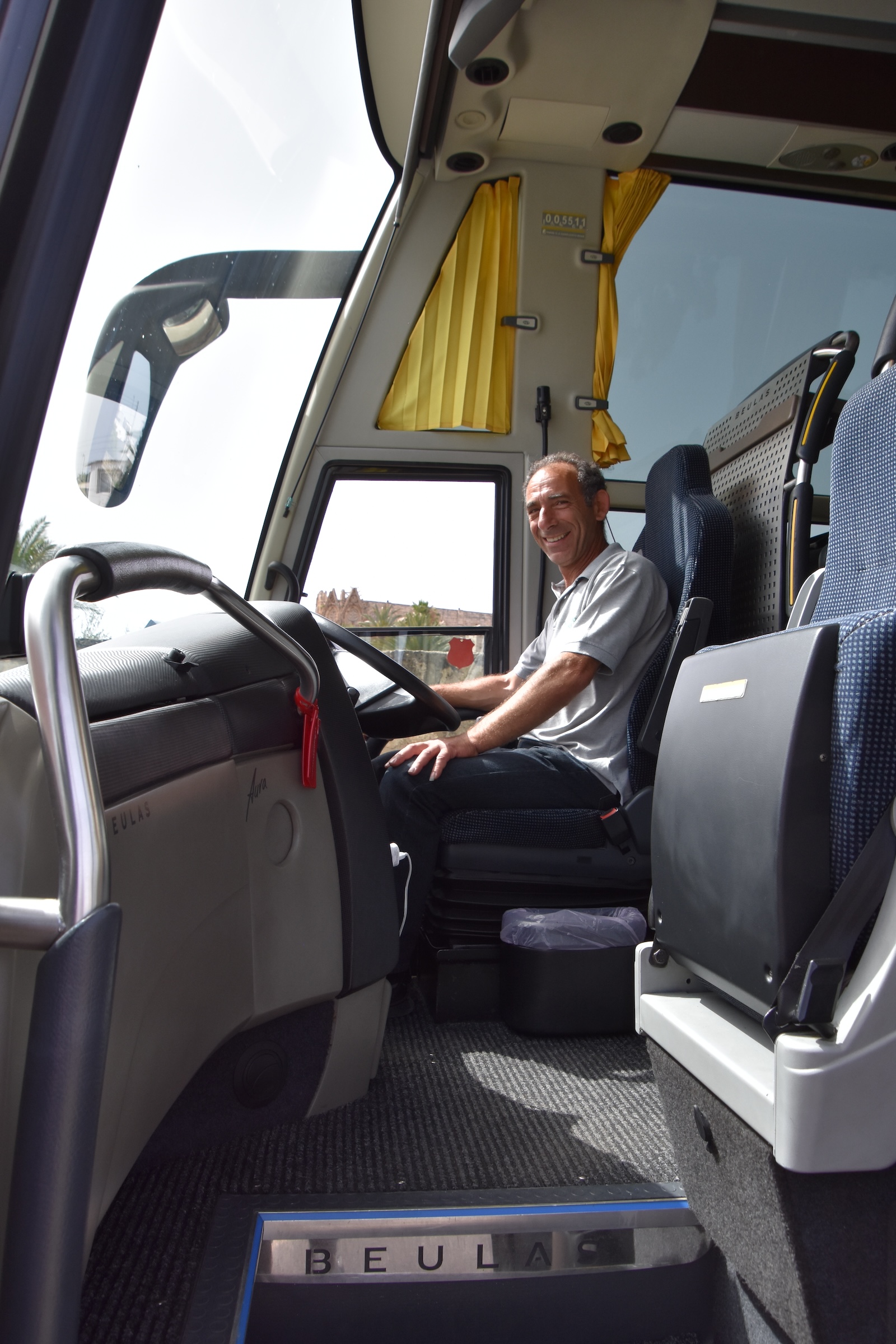
Notice that in Cyprus they drive on the right hand side as in Britain.
The Leisurely Pace
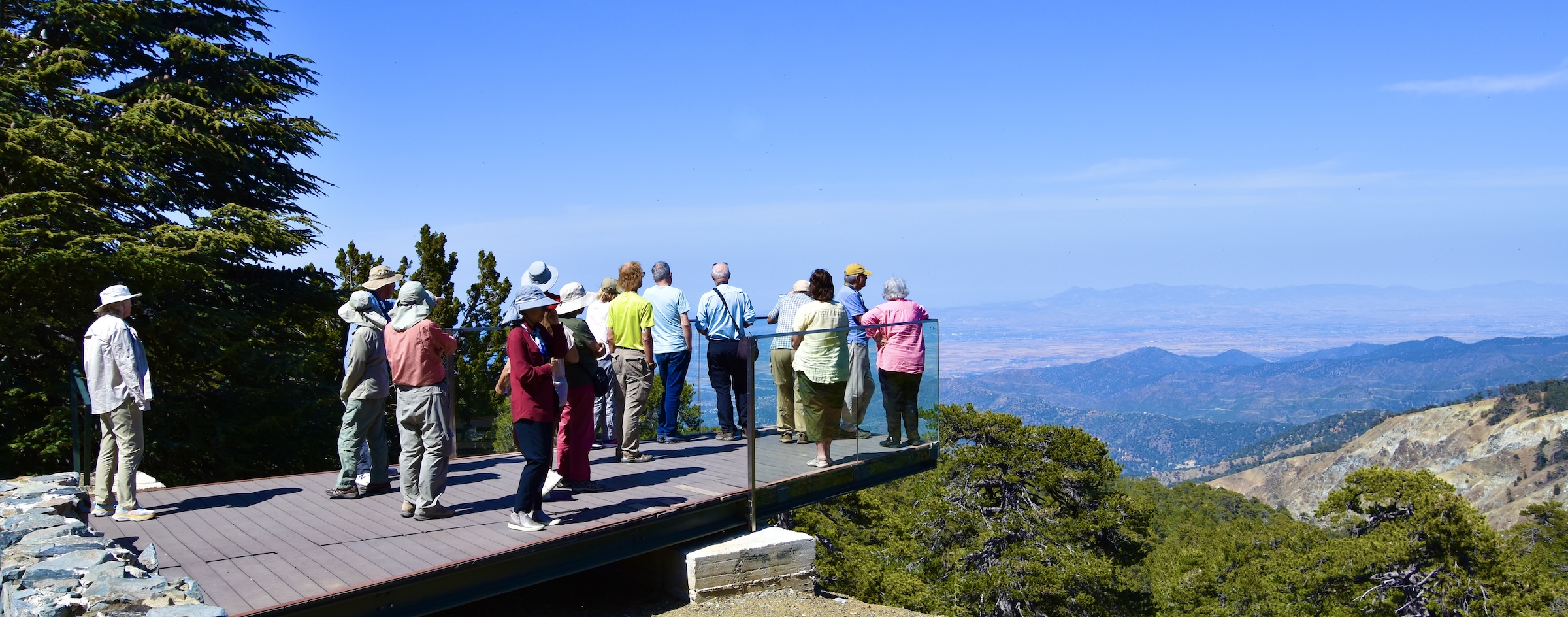
Because Cyprus is a relatively small country and our trip had been expanded from an initial week to almost two weeks the pace of this tour was, for me, just perfect. We had no really early departures, almost all were at 9:00 which gave time to do some exploring on our own which I really enjoyed in both the cities and the small villages we stayed in. We also had no very long drives except the one to the end of the Karpaz Peninsula and even that was not too long and besides the scenery was great.
In terms of the walking tours we took, these were all of moderate length and duration with lots of interesting stops along the way. The one exception was the hike to Caledonia Falls which I would call intermediate in terms of difficulty and that was because it was almost all uphill. For the few people who opted not to do this hike there was the very pleasant option of sitting in the shade at the local taverna near the trailhead.
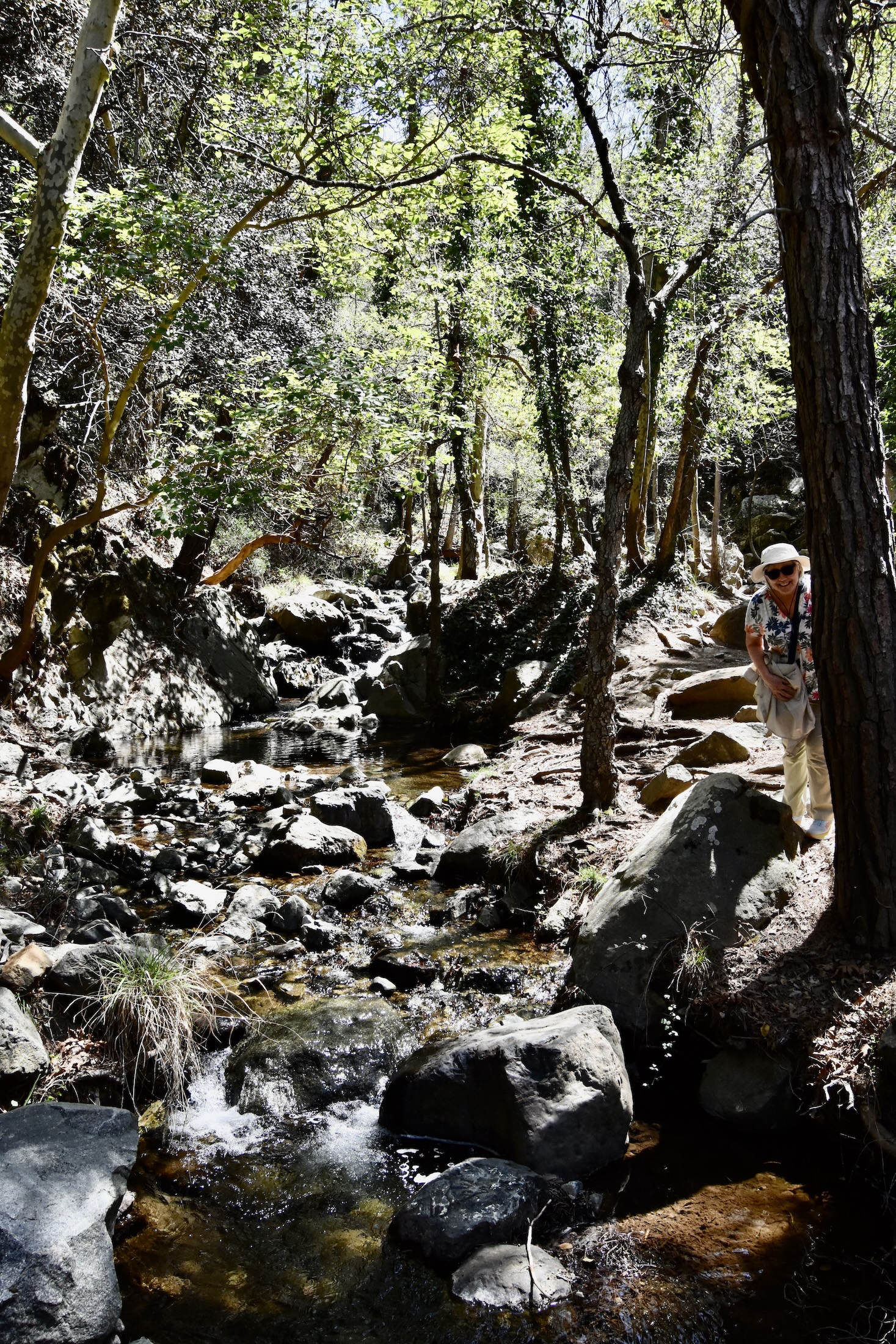
The fact that the days were not overly long meant that there was time to relax between the day’s exploration and the evening meal which was always a highlight of the day. Overall this was a trip that left me deeply satisfied both physically and psychologically. My body and mind got the exercise they needed in just the right measure. I was really sorry to see it end which is why Alison and I stayed on in Larnaca for two extra days.
The Cities of Cyprus
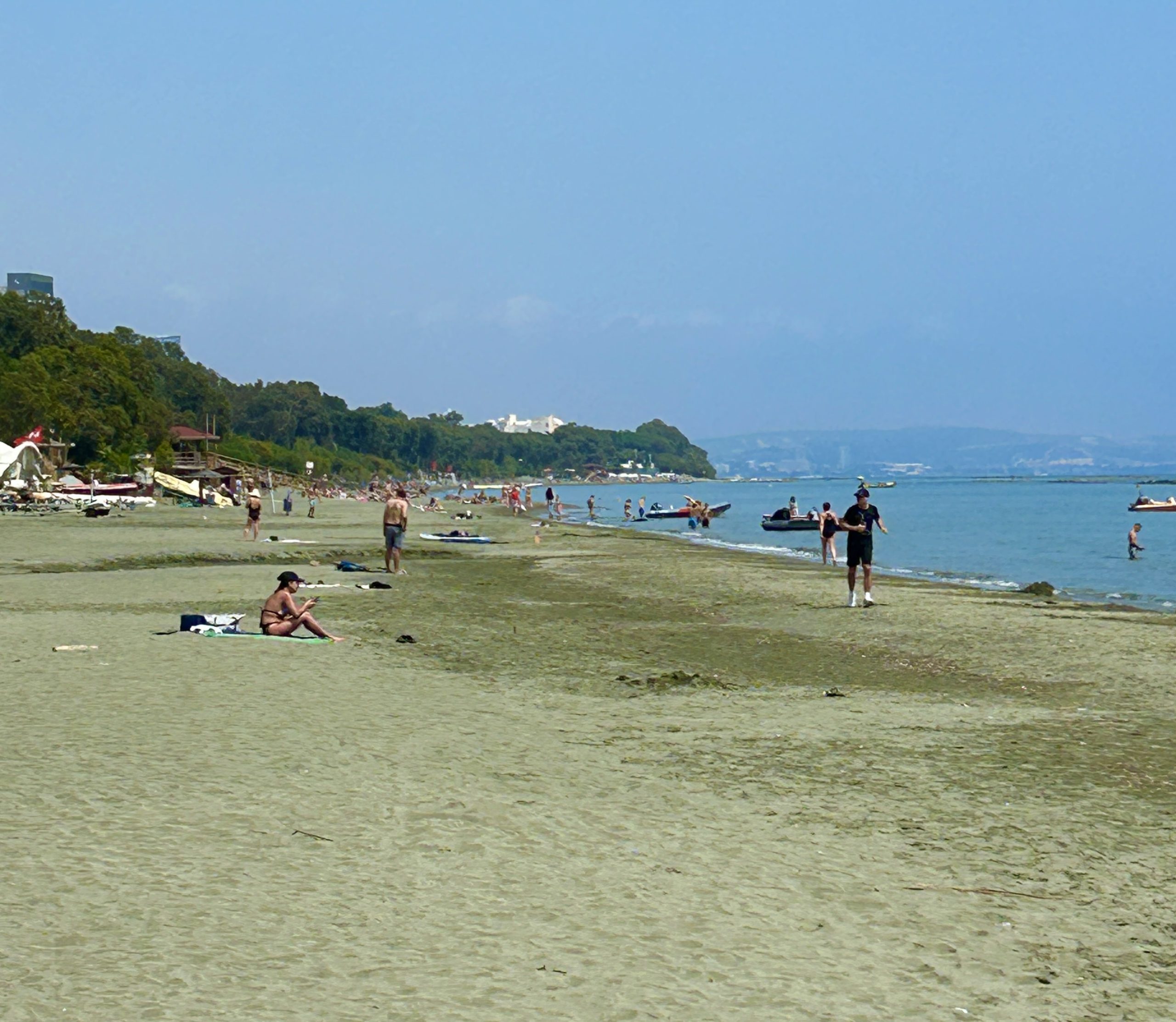
Aside from the capital city of Nicosia, all of Cyprus’ cities are located on the Mediterranean and all are very popular destinations for European tourists or in the case of North Cyprus, Turks. All have very nice waterfronts with a combination of beaches and marinas, the latter of which offer all types of water borne excursions. Each also has its own castle, Byzantine churches and mosques along with a ton of waterfront restaurants. They are all just very enjoyable places to spend some time in as they are not just tourist venues like Ayia Napa with its amusement parks, all inclusive resorts and overcrowded beaches. They all have a vitality that is missing in places that exist only because of tourism where the vibe often seems forced.
We stayed in waterfront hotels and often had great views from the balconies like this one from the Sun Hall Hotel in Larnaca.
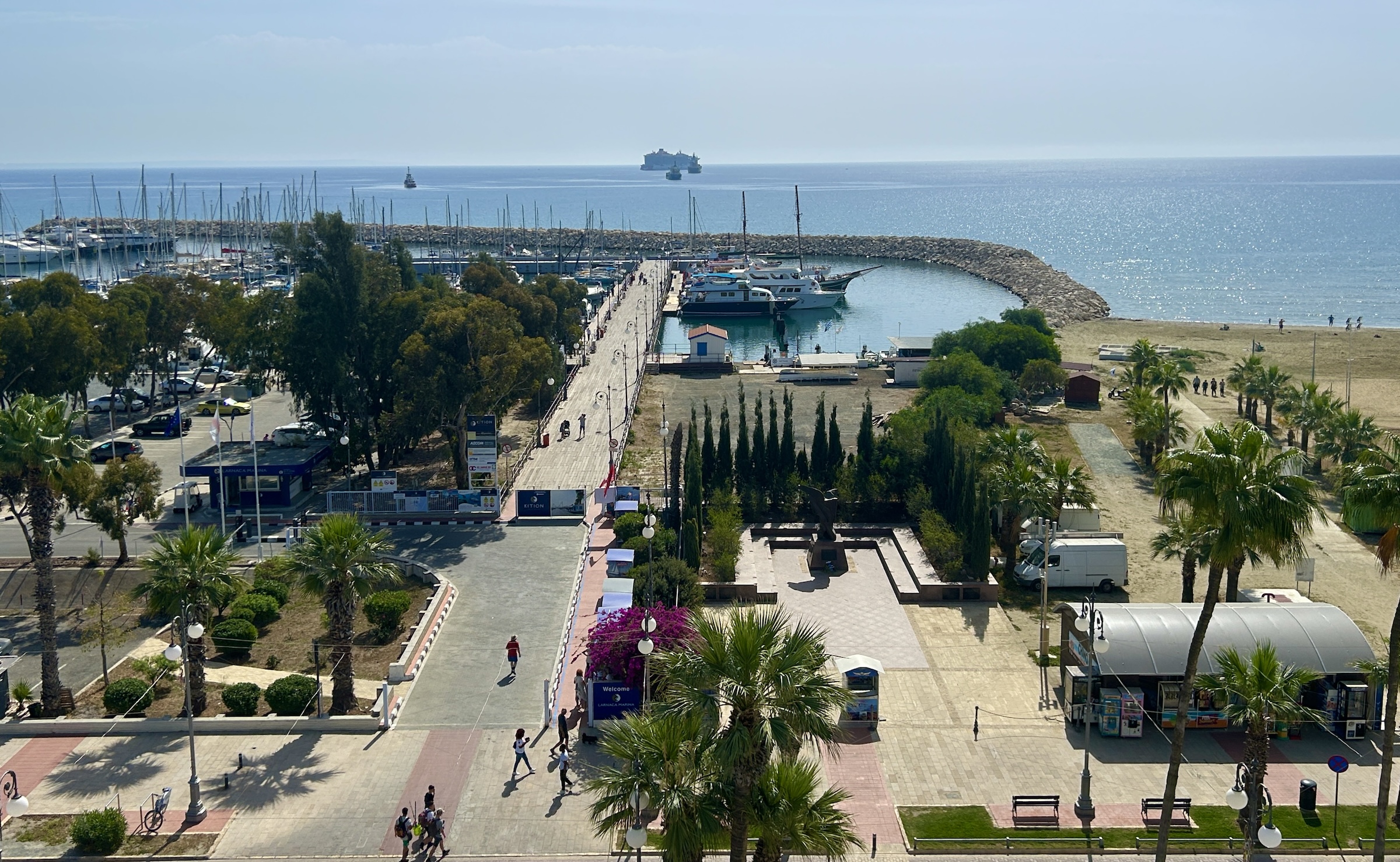
Here is a gallery with pics from some of those cities. Double click to open and double click again to enlarge.
- In Old Port, Limassol, Cyprus
- Traditional Fishing Boat & Mushroom Anchor
- On the Lemesos Waterfront
- Looking South from the Larnaca Castle
- Paphos Harbour
- Lighthouse & Tower, Neo Paphos
- Kyrenia Harbour from the Castle
- View from Othello Tower, Famagusta
- Cyprus Marathon, Limassol
The Villages of Cyprus
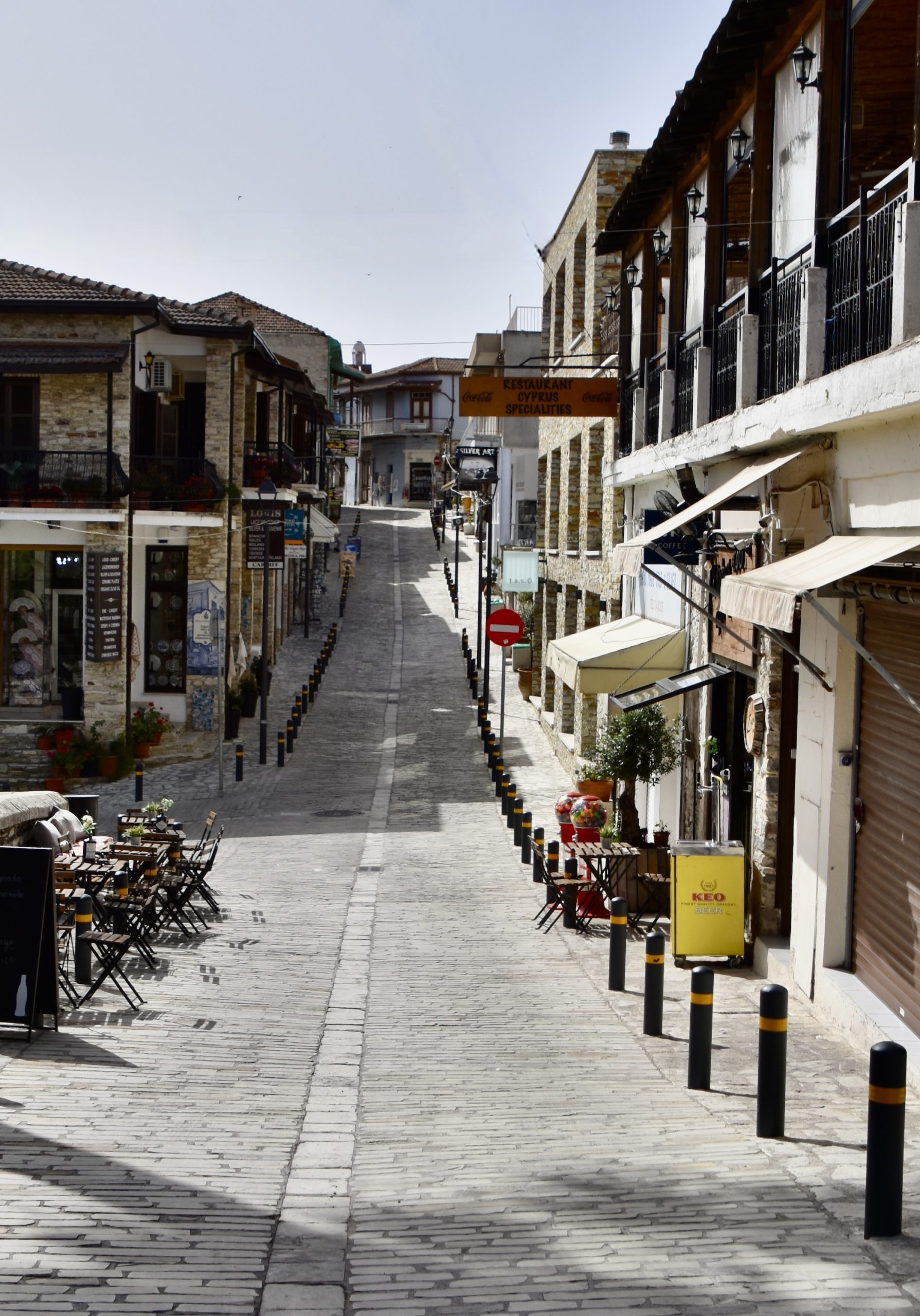
In almost perfect contrast to the Cypriot cities are its ancient villages, most located in the mountainous interior and all unique in their own way. Many are famous for the local products they have been producing for centuries such as Lefkada for silver and lace or Omodos for its traditional Cypriot sweets. These places are a delight to walk around and take photographs of anything that takes your fancy. Here is a gallery of Cyprus village photos.
- Lefkada Lane
- Traditional Linens for Sale, Lekada
- Monkey on the Church Door, Lefkada
- Easter Decorations
- Cypriot Specialties, Omodos
- Omodos Street
- Venetian Bridge, Panayiotis
- Lane in Kakopetria
- Muslim Door in a Greek Village
- Three Dogs in Kakopetria
- Alison in Kakopetria
- Wisteria, Kakopetria
The Archaeological Sites
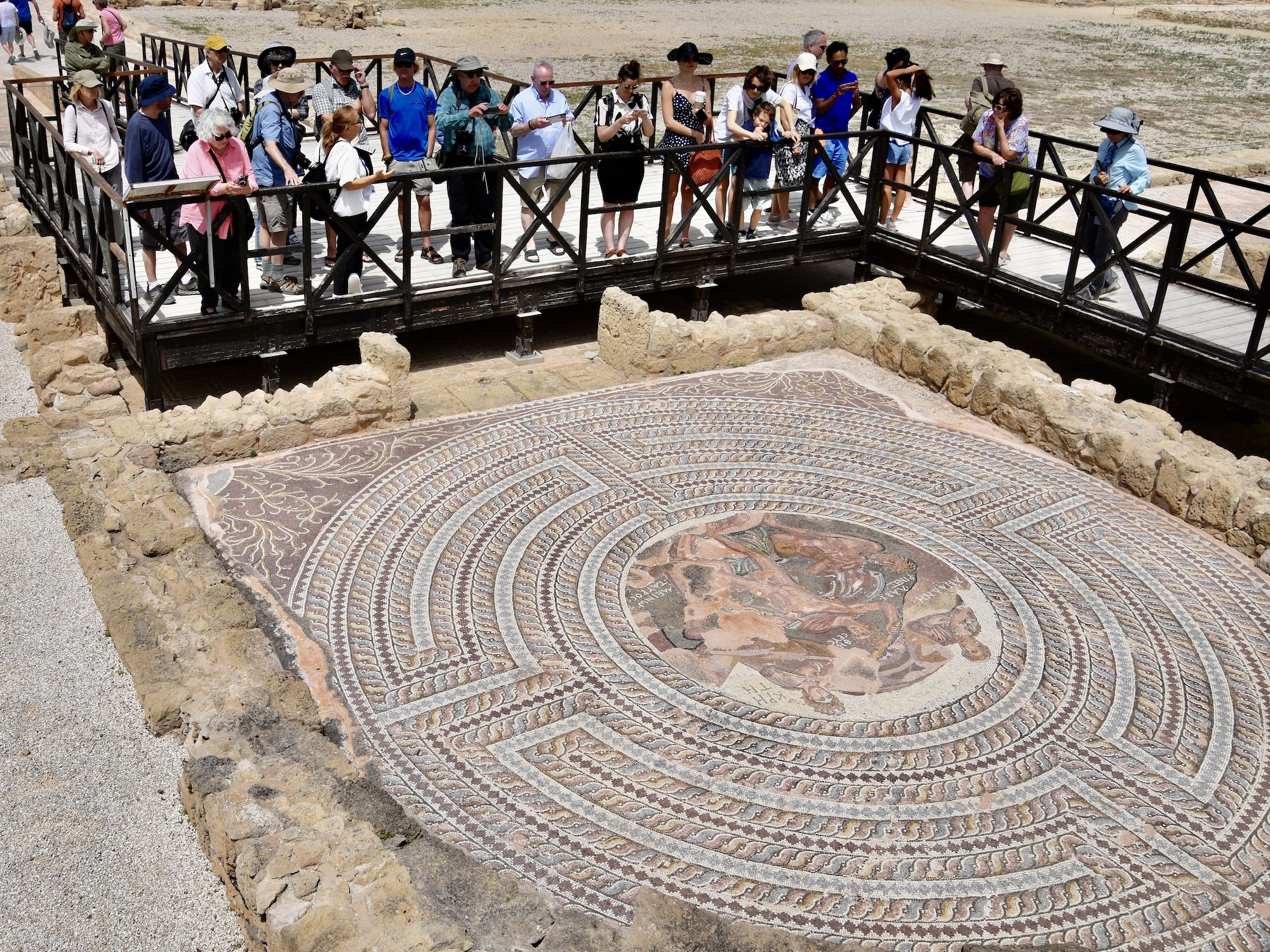
As noted in the introduction Cyprus has a history that goes back to Neolithic times and just about every group that once had any dominance in the eastern Mediterranean has left their traces behind in the form of archaeological sites, most of which have never been fully excavated. The most impressive sites date from the Roman era, but there are also Greek, Byzantine and Ottoman sites as well as the UNESCO World Heritage site of Choirokoitia that dates back almost 10,000 years ago. I don’t think there’s one major Cypriot archaeological site that we missed on this trip. Here is a gallery of some of the highlights.
- Phaedra & Hippolytes Mosaic, Neo Paphos
- The Four Seasons Mosaic, Neo Paphos
- Ruins of the Sanctuary of Aphrodite, Old Paphos
- Tomb 8, Tombs of the Kings, Paphos
- Choirokoitia
- At the Sanctuary of Apollo Hylates
- Our Group at Kourion
- Roman Forum, Kourion
- Ottoman Aqueduct, Larnaca
- Salamis from the Theatre
- Group at the Theatre of Salamis
- St. Nicholas Cathedral, Famagusta
- Othello Tower, Famagusta
- Bellapaiss Monastery Ruins
- Caravansary, Nicosia
In addition to visiting the archaeological sites we also visited the excellent Cyprus Museum in Nicosia which has exhibits in chronological order of all the major eras of Cyprus history and pre-history. So if visiting ancient ruins is one of your things, Cyprus will more than satisfy.
The Castles
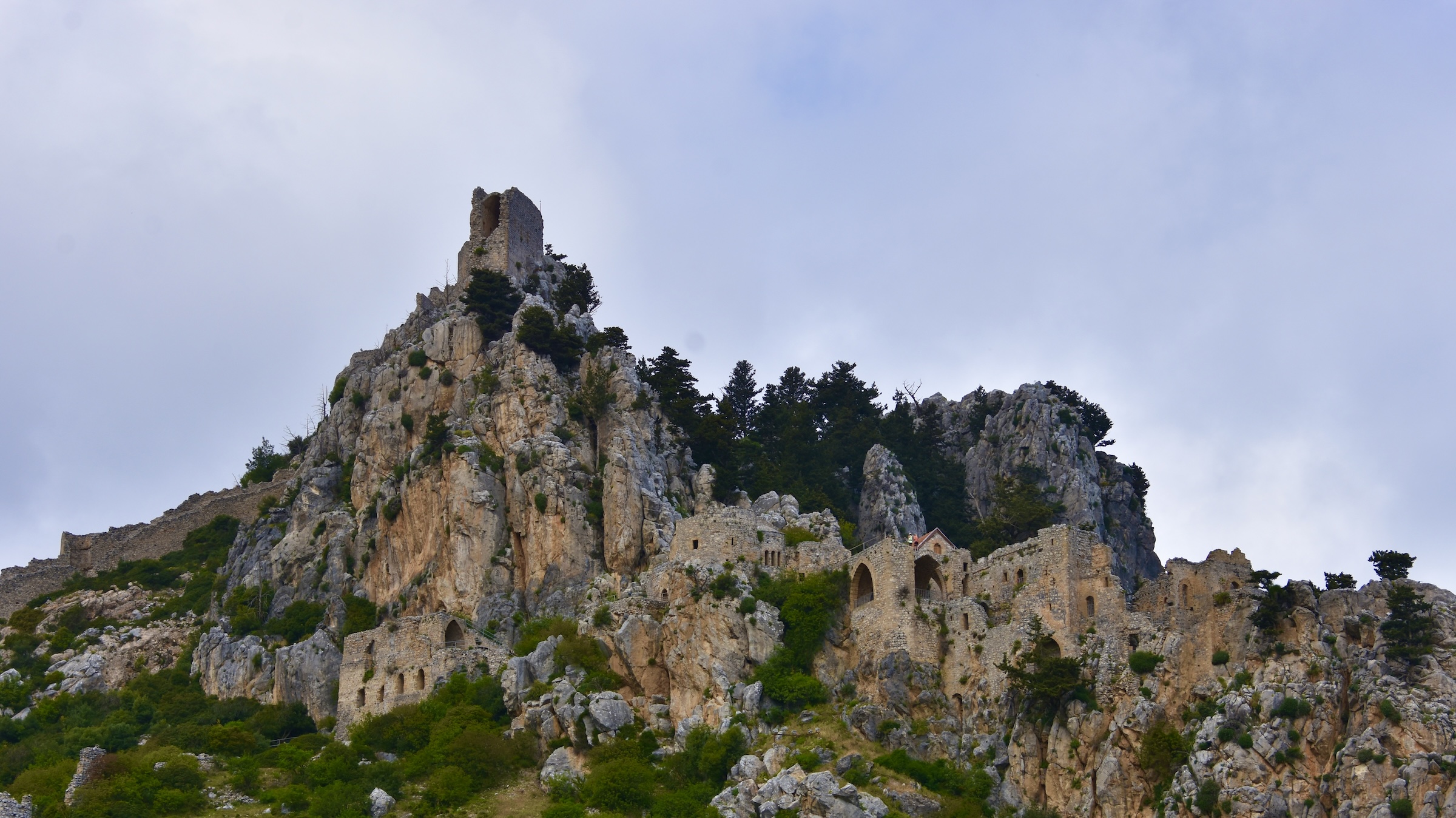
In a class by themselves are the castles of Cyprus, including two of the most spectacular locations I have ever seen, St. Hilarion featured above and Kantara which is so difficult to get to that neither Angela or Kostas had ever been there before. These were built during the days of the Crusaders and meant to be havens for the locals living on the coast when they were threatened by Saracens or other piratical sorts. The views from these two castles are world class and frankly I’d go to Cyprus just for these.
This is looking down the Cyprus panhandle from Kantara castle.
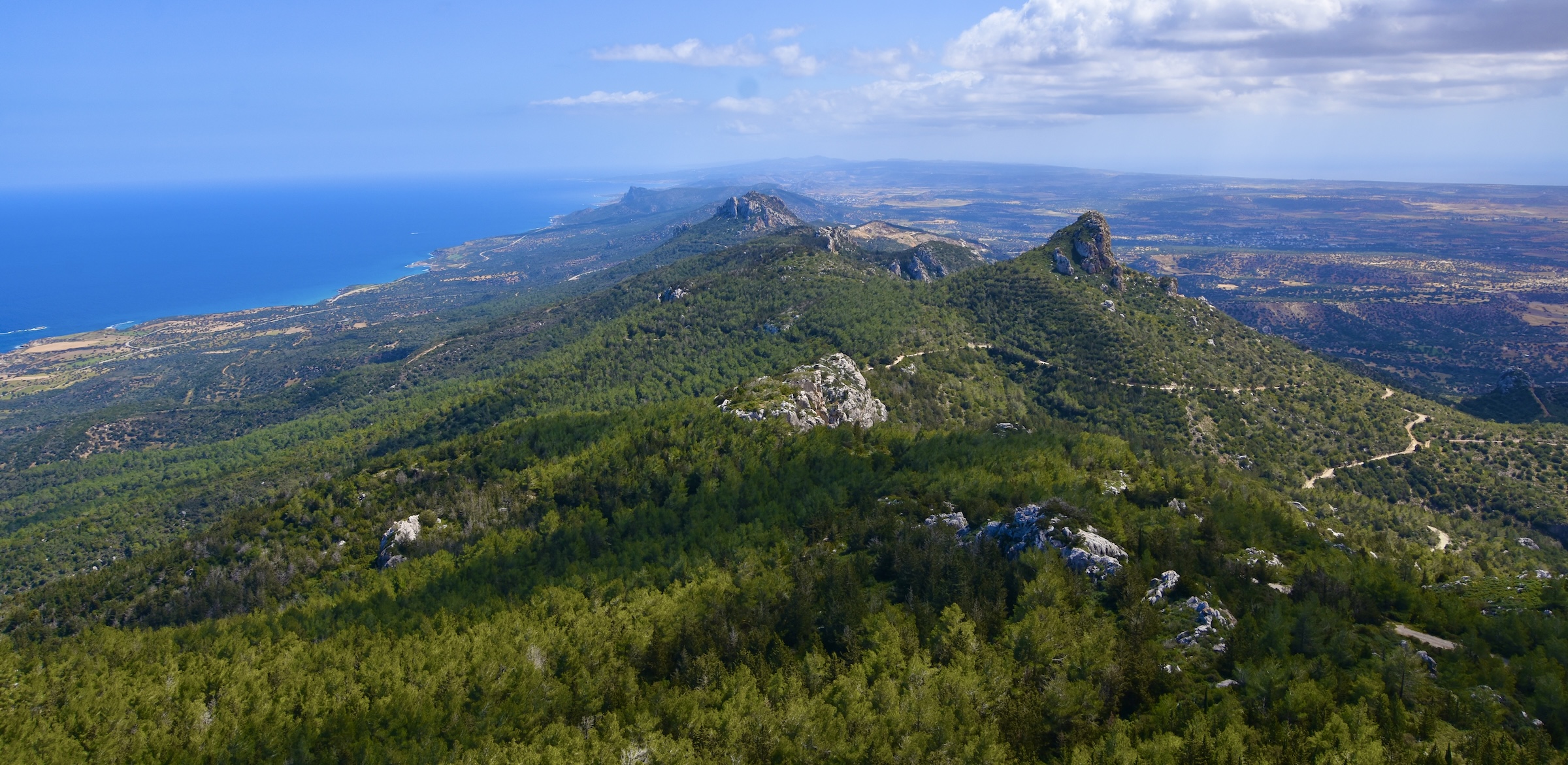
Aside from these two off the charts castles, which are ruins admittedly, every coastal city in Cyprus has its own castle that is very much still in use as a museum or just a place from which to admire the view. Here is a small gallery of these castles.
- At Limassol Castle
- Kolossi Castle
- View from Larnaca Castle
- Paphos Castle
- Kyrenia Castle Interior
- On Othello Tower, Famagusta
The Painted Churches of Cyprus
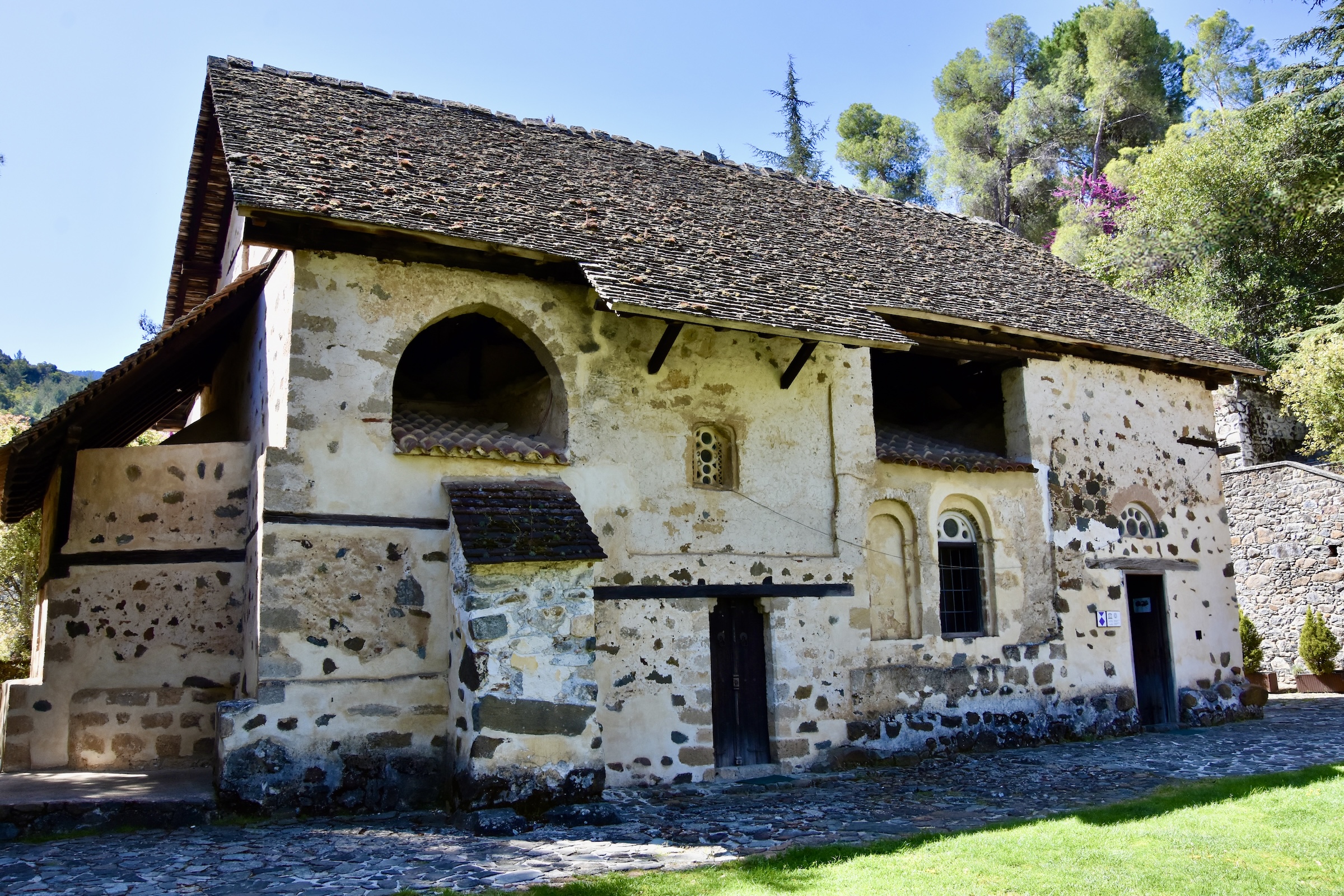
Cyprus has a unique collection of small Byzantine churches scattered throughout the Troodos Mountains that are so famous for there painted interiors that they have achieved UNESCO World Heritage site status. There are ten in total and during our tour we visited five of them, in most cases being the only tourists there. Photography is not permitted inside these churches so I have used this photo from the UNESCO website to give you an idea of the brilliance of some of these interiors.
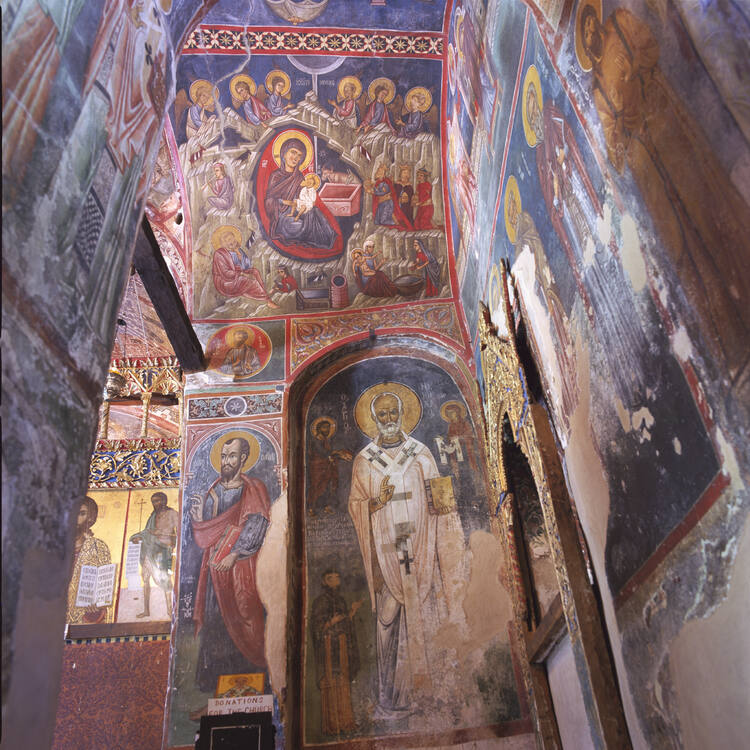
What I really enjoyed was Angela’s explanations of the various Biblical stories many of these paintings portrayed and the later saints associated with each church.
Aside from the painted churches, Cyprus figures prominently in the early Christian world. St. Paul, who seems to show up everywhere I go in the eastern Mediterranean these days, was here and got a whipping in Paphos. His frequent companion St. Barnabas was a Cypriot and we visited his mausoleum on the tour near Salamis. Even more surprising to me was the fact (?) that Lazarus, after being risen from the dead by Jesus, ended up in Cyprus and was originally entombed in Larnaca before his remains were stolen by Crusaders.
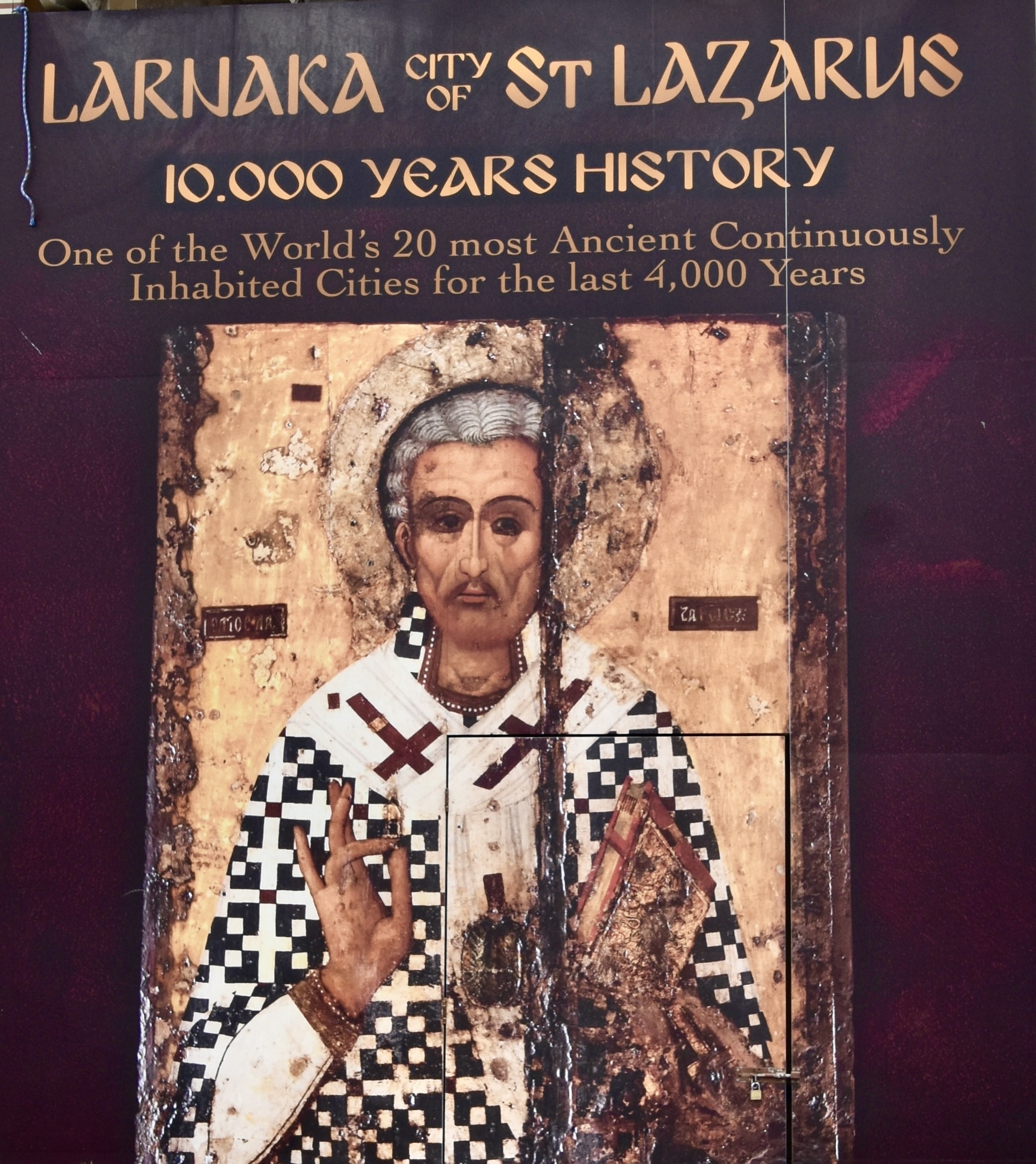
Our tour was not confined just to Christian sites, but included a number of mosques including one that contains the tomb of Umm Haram, Mohammed’s aunt who died after falling off her mule just after the Muslim invasion of Cyprus in the 7th century.
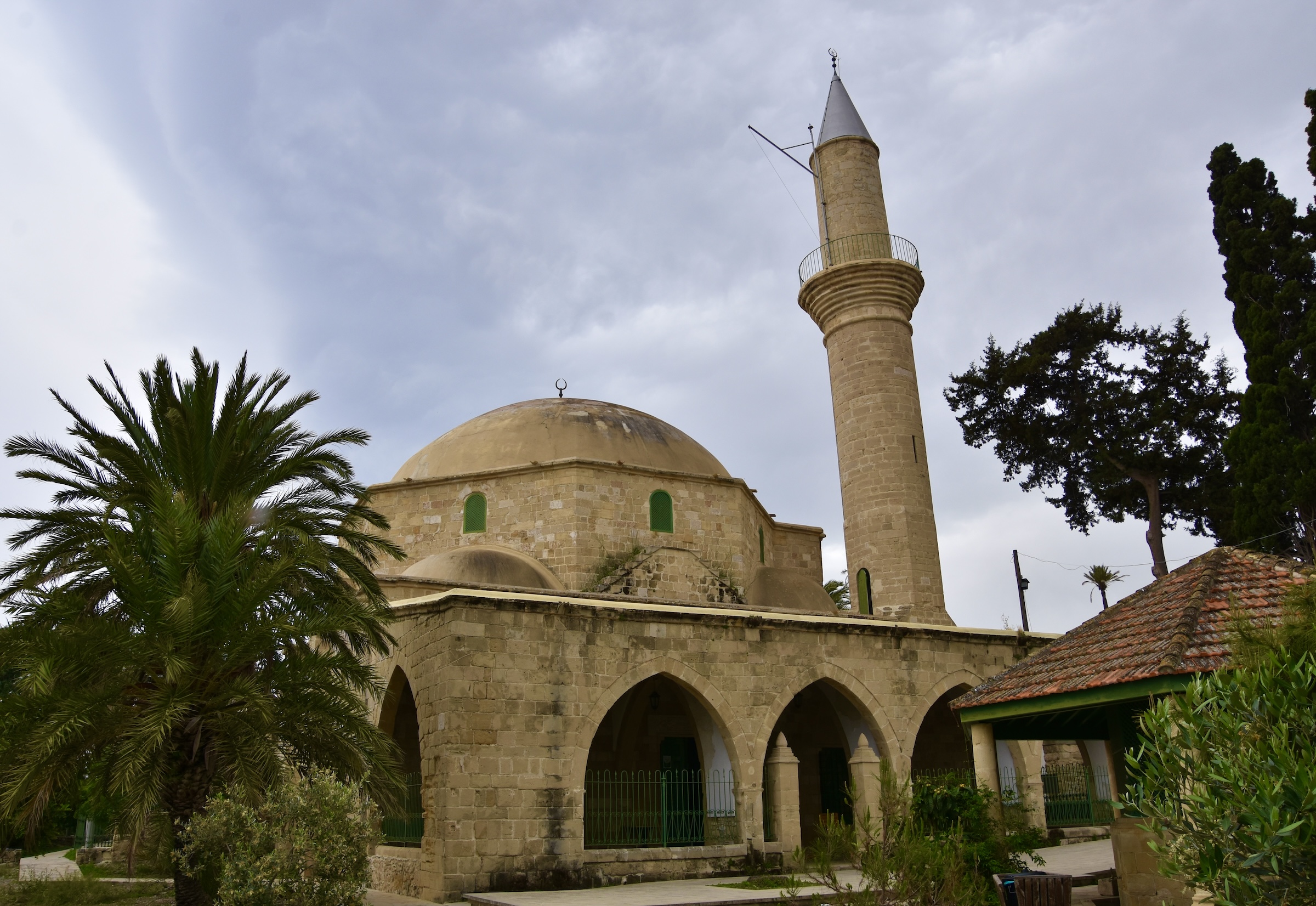
The Food & Drink
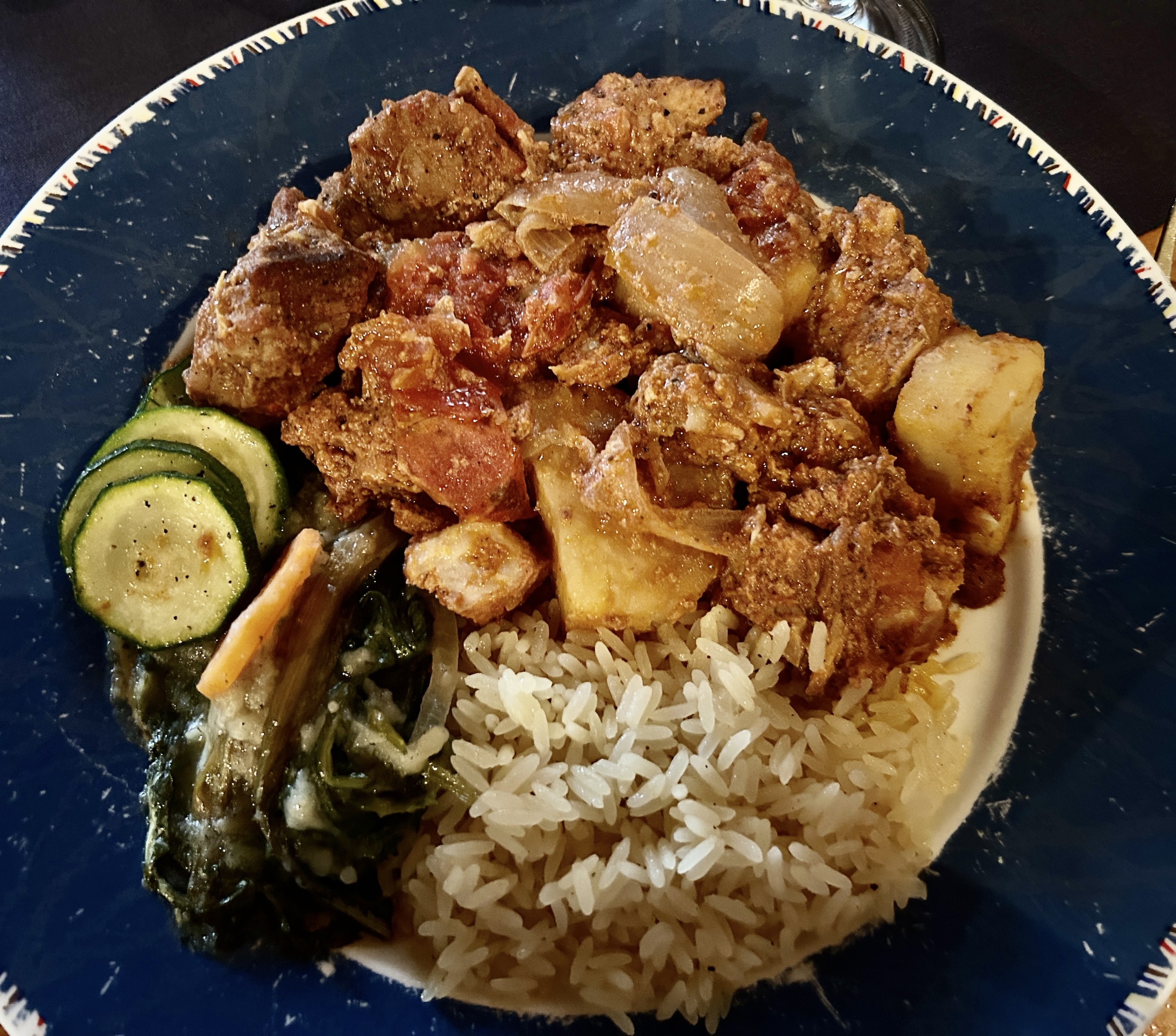
Always at the top of my list of the reasons I really like travelling with Adventures Abroad is the quality of the food and drink and boy did Cyprus deliver on that score. All breakfasts and dinners were included and a few lunches. For those who are used to the really shitty breakfast buffets of most North American hotel chains, be prepared to be blown away for the buffets in Cyprus. They are simply amazing. The variety of hot and cold dishes, including pastries, cheeses, fruits, vegetables, nuts, etc. etc. is off the charts.

For the evening meal, Martin split it about evenly from a preset menu to a la carte and in every case the only problem was too much. If you like Greek cuisine, and who doesn’t, Cyprus will be a delight.
Some of the restaurants such as the Art Cafe 1900 in Larnaca, the Byzantino at the Casale Panayiotis in Kalopanayiotis and La Brezza in Limassol were simply world class in terms of the quality of the food, equal to any I’ve had with any tour company anywhere.
A real bonus for Alison and me were the Cypriot wines. The’ve been making wine here for over 6,000 years so it’s no surprise that they’re good at it. While you can get Cyprus grown chardonnay, sauvignon blanc and other well known grape varieties, my preference was for the Cypriot xynisteri grape which produces a light, minerally white wine that goes very well with most Greek dishes, especially seafood. There really is no reason to drink anything but Cypriot wines in Cyprus.
The beer in Cyprus is OK, but not great. KEO is a light lager that is the most popular on the island and made for sipping on the beach more than as an accompaniment for food. That’s about the most serious cavil I had about this trip which is pretty inconsequential.
North Cyprus – The Elephant in the Room
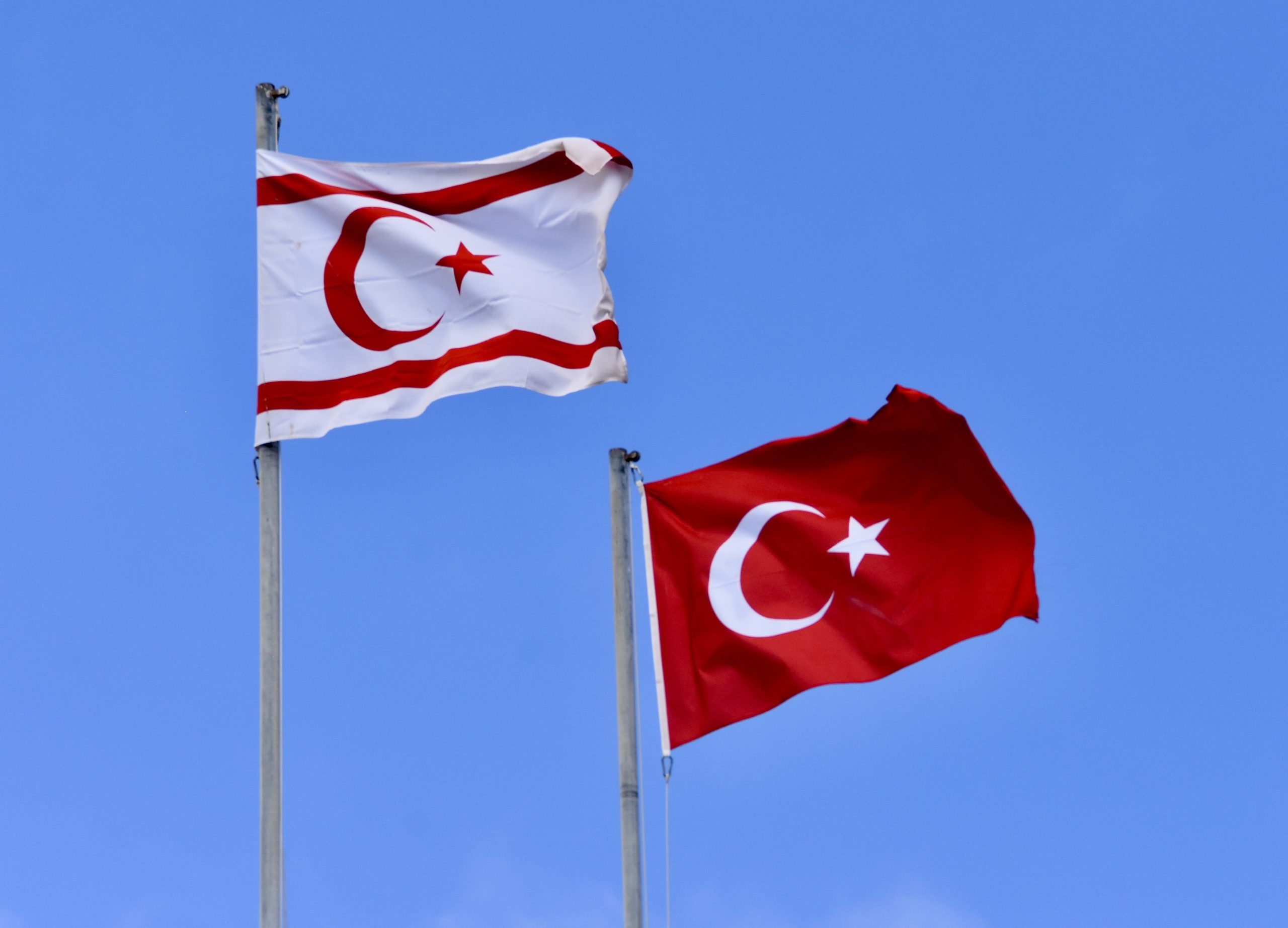
Most people are aware of Cyprus’ troubled past which saw a full scale invasion of the northern part of the island by Turkey in 1974 and resulted in the de facto separation of Cyprus into Greek and Turkish segments that remains the reality today. Canadians played a role as UN peacekeepers from 1964 to 1993 with over 30,000 serving. Twenty-seven were killed while on duty there and in Limassol I tried to visit the graves of six of them who were buried in a cemetery very close to the hotel where we were staying. However, despite multiple attempts and contrary to my experience with other Commonwealth Grave Commission cemeteries, it was always locked.
Here’s a very brief summary of how the current situation in Cyprus came to be.
As note previously the island of Cyprus has been influenced by a myriad of different cultures since it was first inhabited, but by the end of the Middle Ages the population was almost all Greek speaking and adherents of the Greek Orthodox religion. That all changed when the Ottomans invaded in 1571 and expelled the Venetians who were running the show at that time. The Ottomans remained in control until 1878 when they made a deal with Great Britain to allow them to take over the island as a Protectorate in exchange for British help against the Russians elsewhere. During that 300 + years of rule many Turks immigrated to the island and formed a sizeable minority by the time the British arrived.
When the Ottomans sided with Germany in WWI, Britain ceased ruling Cyprus as a Protectorate and made it a formal colony which the new Republic of Turkey recognized in 1923. Recall that in the years following WWI Greece and Turkey fought a war that ultimately led to over one and half million persons being displaced from their homes. Greeks in Turkey went to Greece and Turks in Greece went to Turkey. That didn’t happen in Cyprus. Instead the British ruled with an increasingly iron fist that led to the desire for independence. However, the great majority of Cypriot Greeks did not want their own country, but union with Greece or enosis as they called it. The British said no and a long time guerilla war broke out between Cypriot Greeks and the British. Not surprisingly the Turkish population wanted nothing to do with enosis and pushed for what they called taksim or separation.
In 1960 Cyprus was granted independence with no enosis and no taksim. With the British gone (they kept some substantial bases which still exist today), the Greeks and the Turks were free to go at it which they did and that’s when the UN Peacekeepers arrived. The situation came to head in 1974 when the military junta that was ruling Greece backed a military coup in Cyprus that was meant to create the enosis the Greek Cypriots had been hoping for since independence. That move backfired spectacularly as the response from Turkey was to invade the north of the island in July 1974 which the Cypriots were powerless to stop. The taksim the Turkish Cypriots had clamoured for became a reality and as in Greece and Turkey in the 1920s, great numbers of people where displaced with the Turks going to the north of Cyprus and the Greeks on that side going south.
This is a map of Cyprus as it exists today. The island remains divided and all efforts to resolve matters have failed. In 1983 the Turkish part of the island declared its independence as North Cyprus and was recognized by Turkey, but not a single other country to this day. There is a substantial no man’s land dividing the two which has a major military presence by both Cypriot and Turkish forces. There are a limited number of border crossings and you need a passport to go from one area to the other.
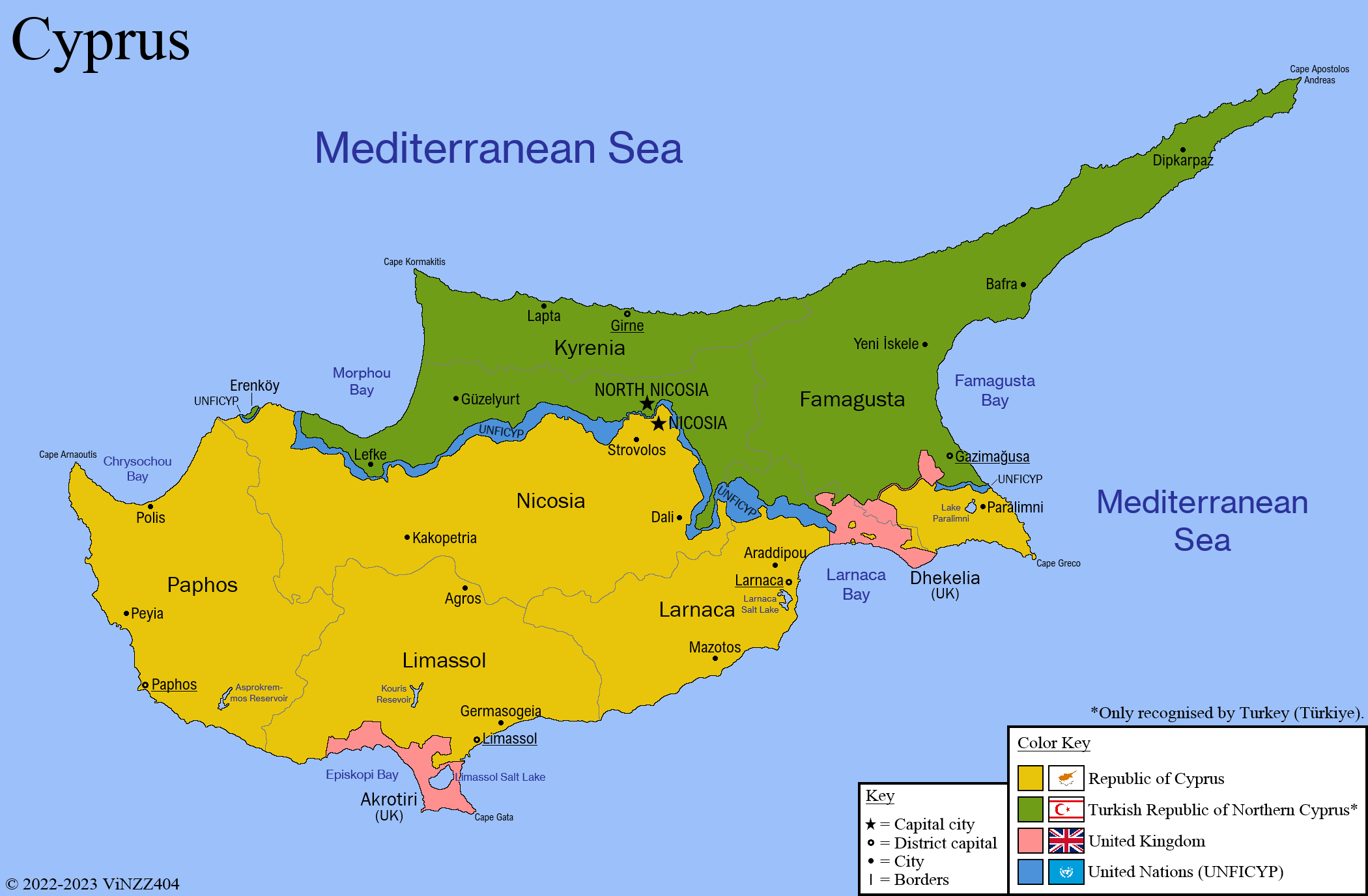
So with all this enmity is it even worth considering visiting North Cyprus or should one just do what almost all visitors do, just enjoy the beaches and cities and villages of the southern part? The answer is a definite yes. First of all, according to Angela, the supposed animosity between the Greek and Turkish Cypriots is more a creation of Greece and Turkey than Cyprus. Relations between the two sides are not frigid she maintains and thousands of people cross from one side to another every day, particularly in Nicosia which is in effect what Berlin was until 1989.
I am more than grateful that Martin and Angela decided to include multiple visits to North Cyprus on the itinerary. It takes a while to make the crossing because you have to go through both Cypriot and Turkish checkpoints where your passports are scanned, but once on the north side there are no other real concerns. You have to pick up a North Cyprus guide and from the conversations between those guides and Angela and Kostas it did indeed appear that there was no animosity between them.
Many of the best places to visit in Cyprus are in the north including the cities of Kyrenia and Famagusta, the two great crusader castles and the marvellous Karpaz Peninsula. I will write more about these in future posts, but for now suffice it to say that the trip would not have been complete without visiting North Cyprus.
I sincerely hope that Adventures Abroad does make this itinerary a regular one as Cyprus is definitely worth visiting.


